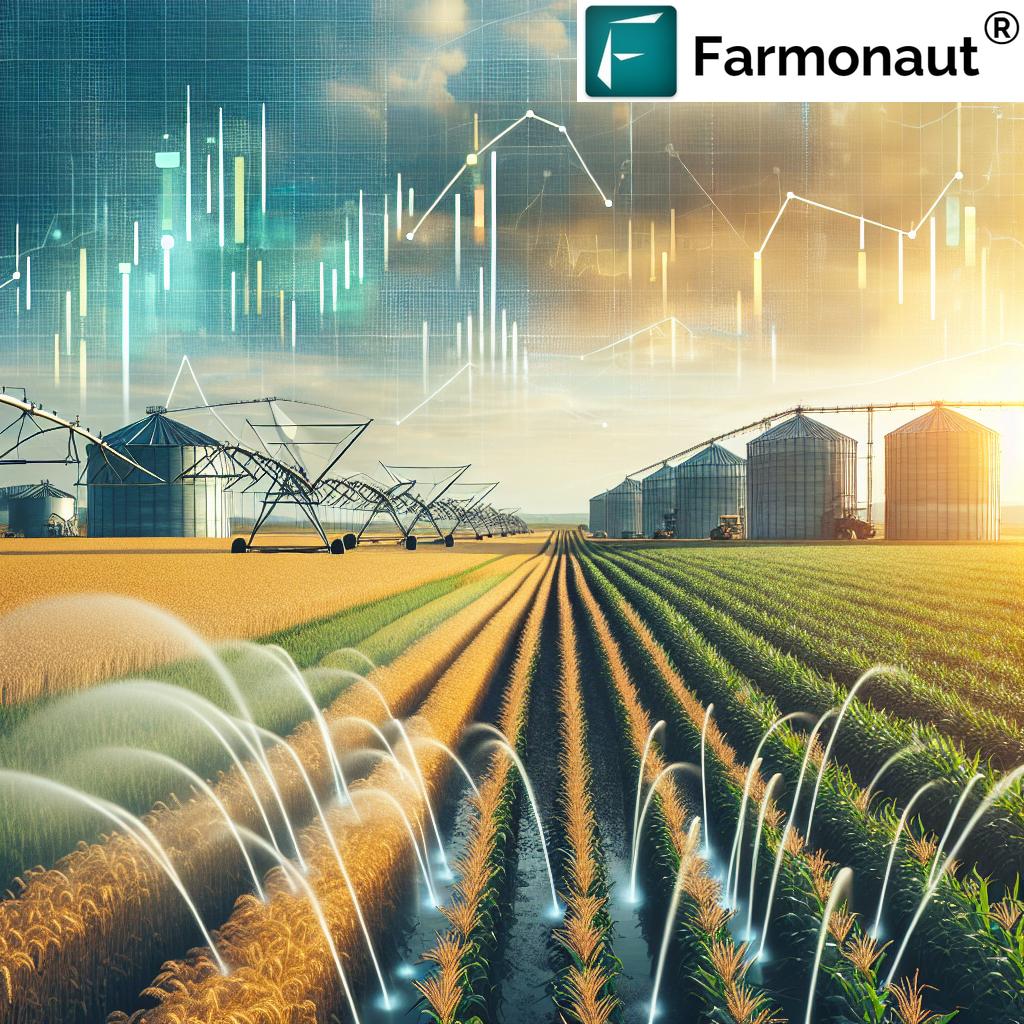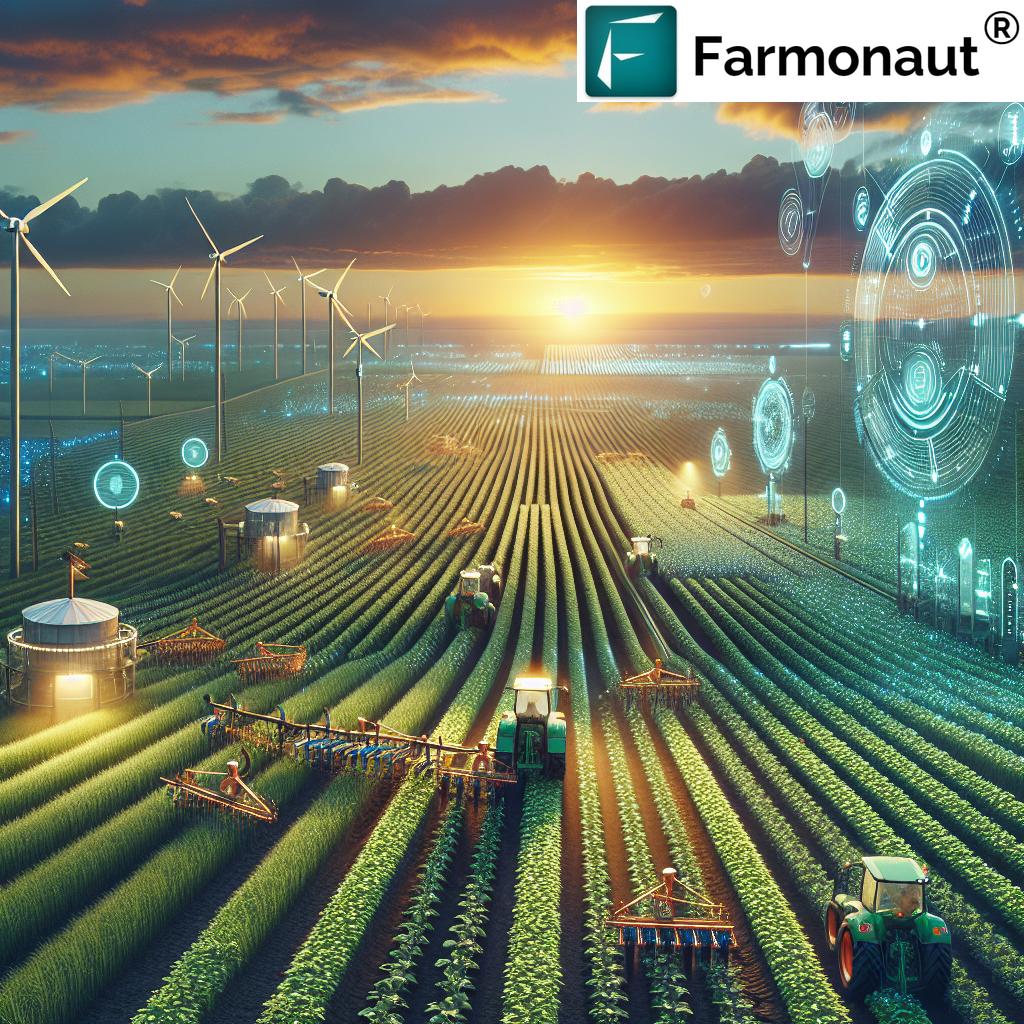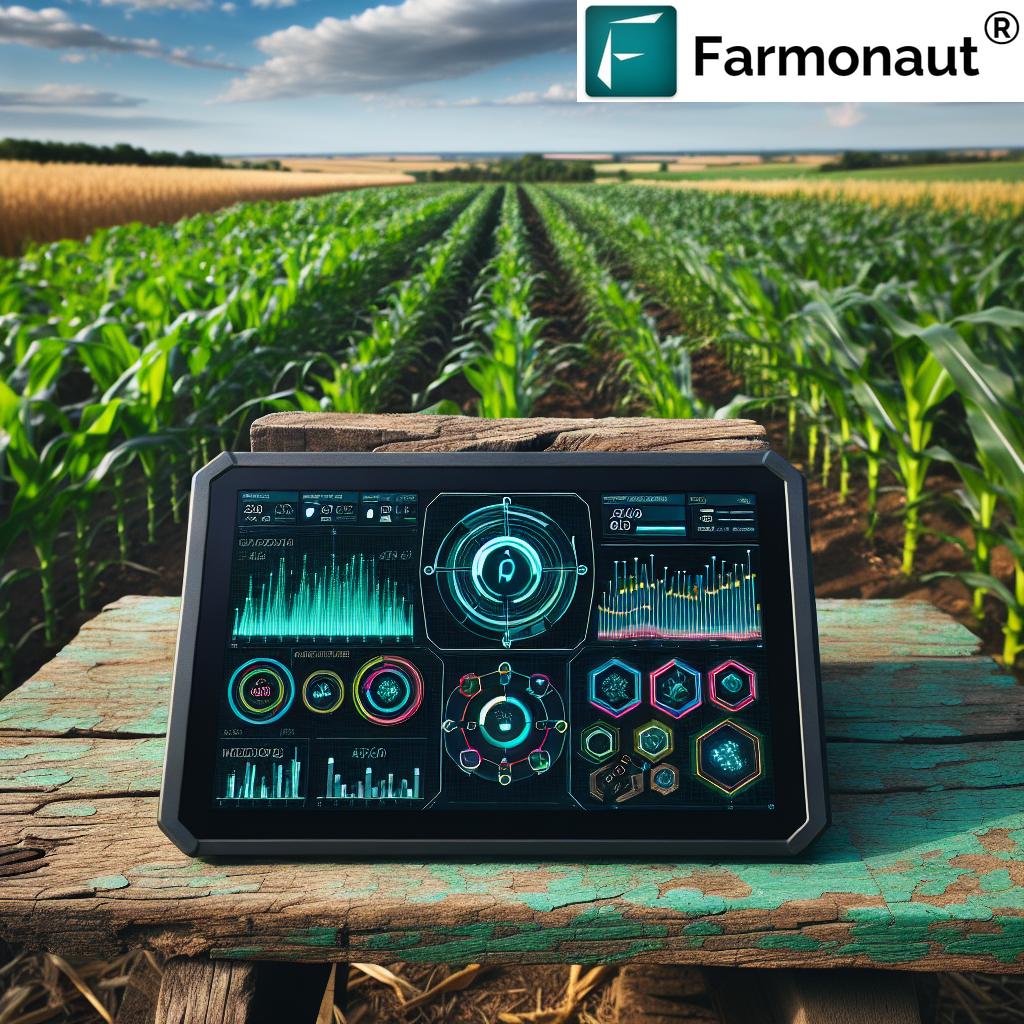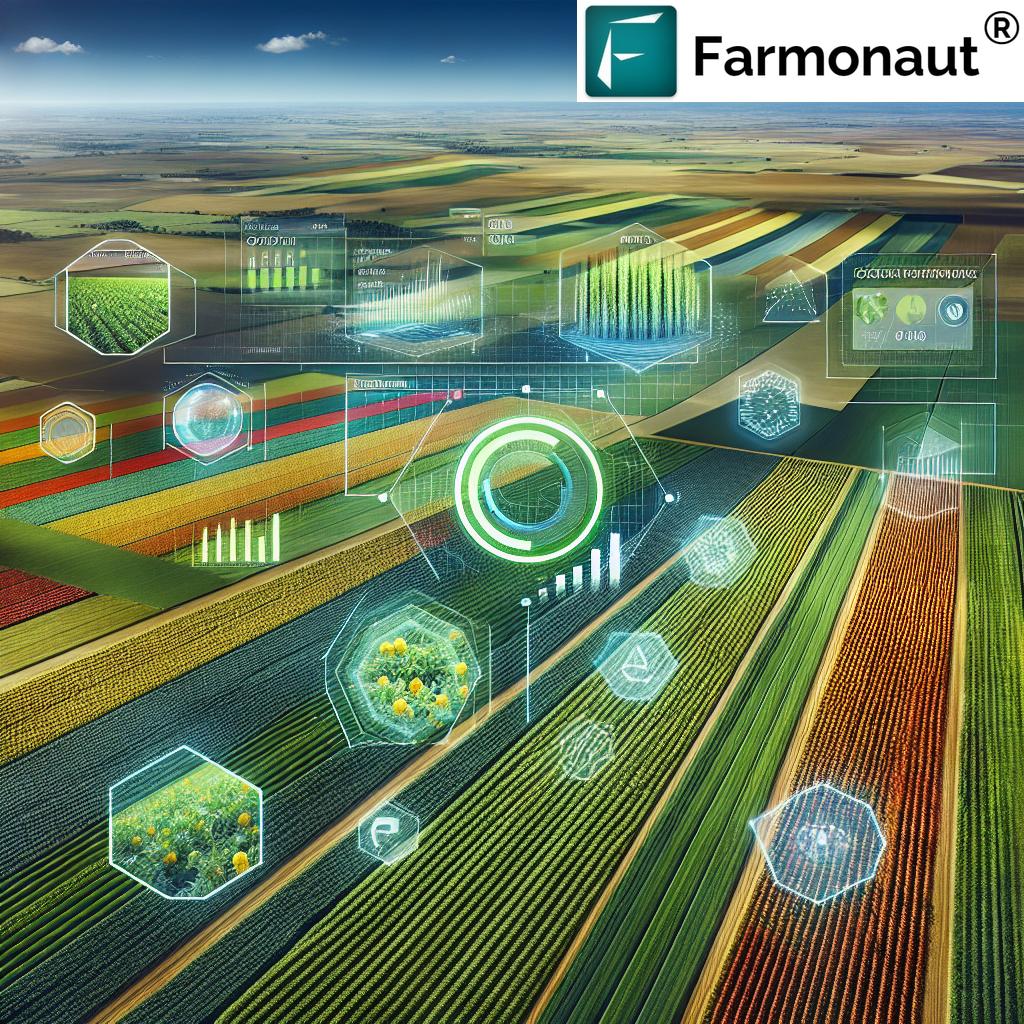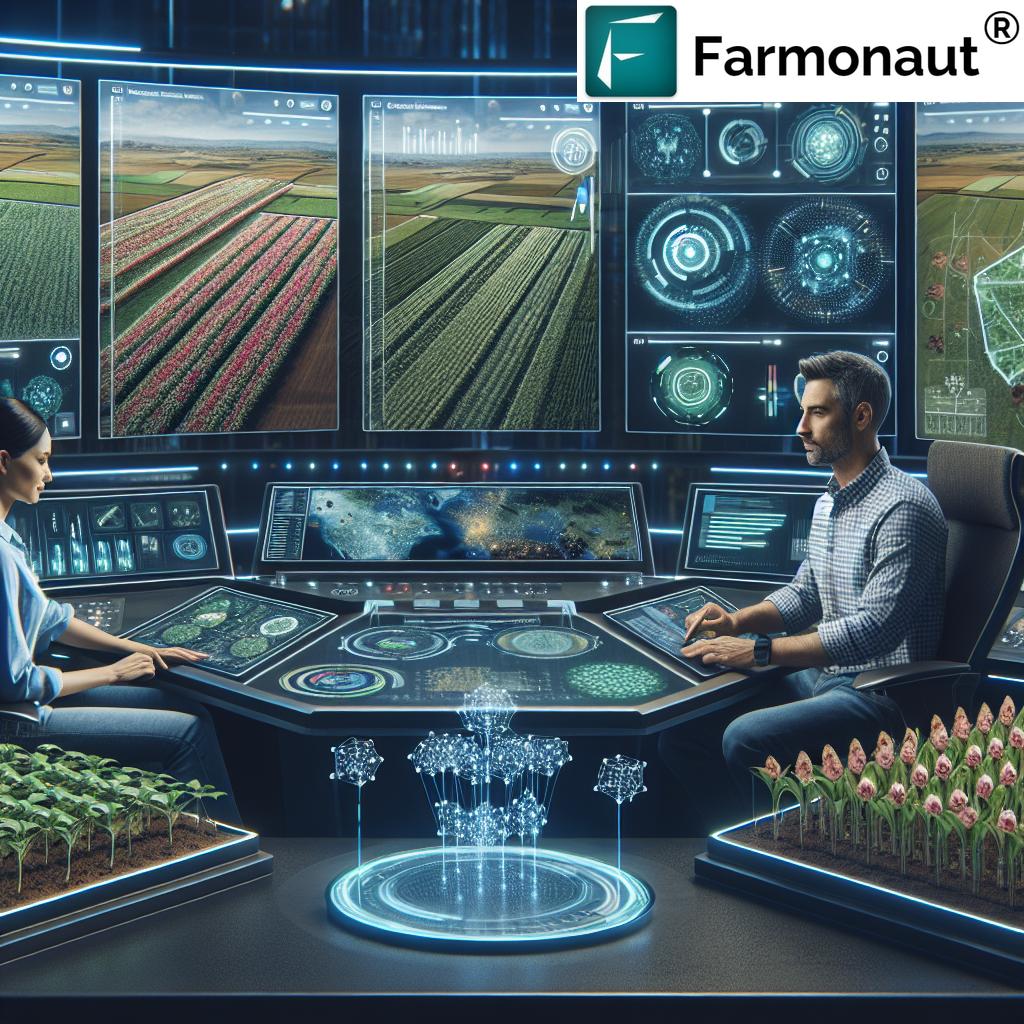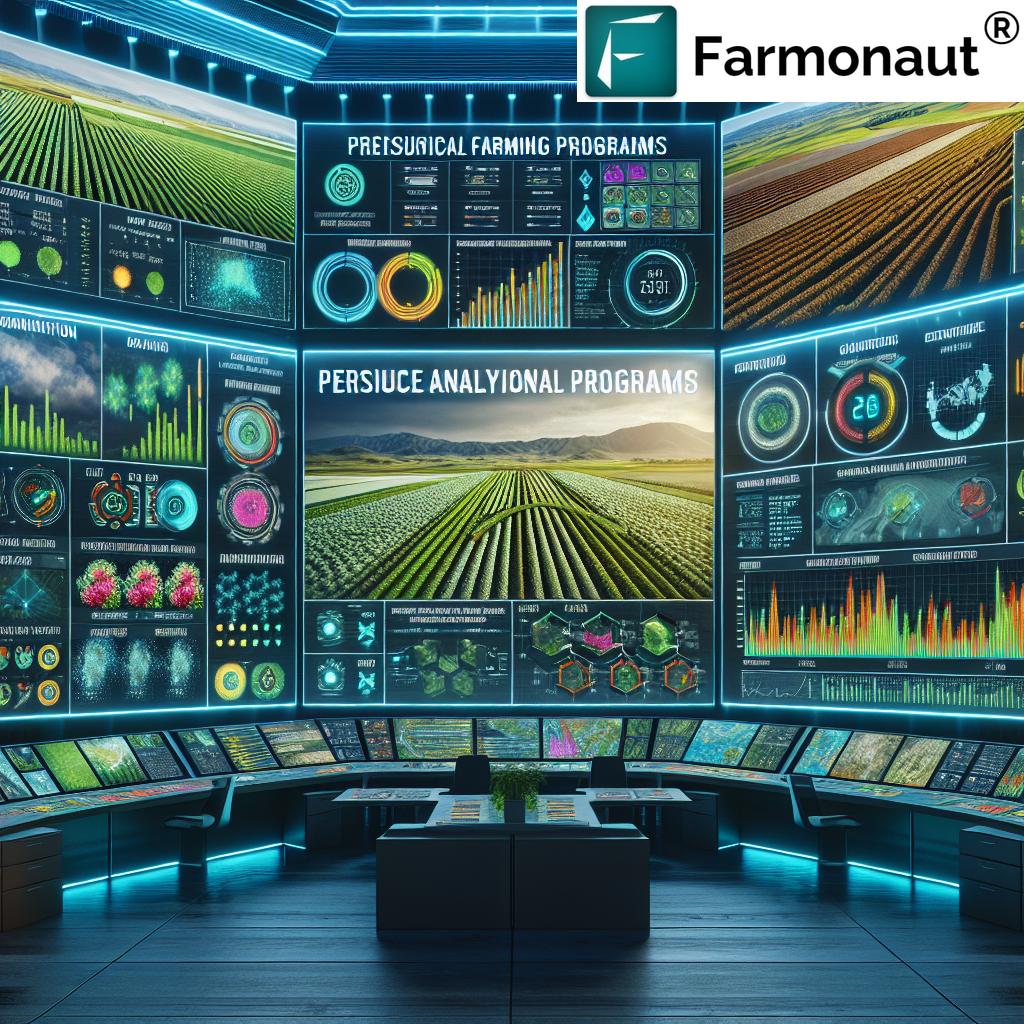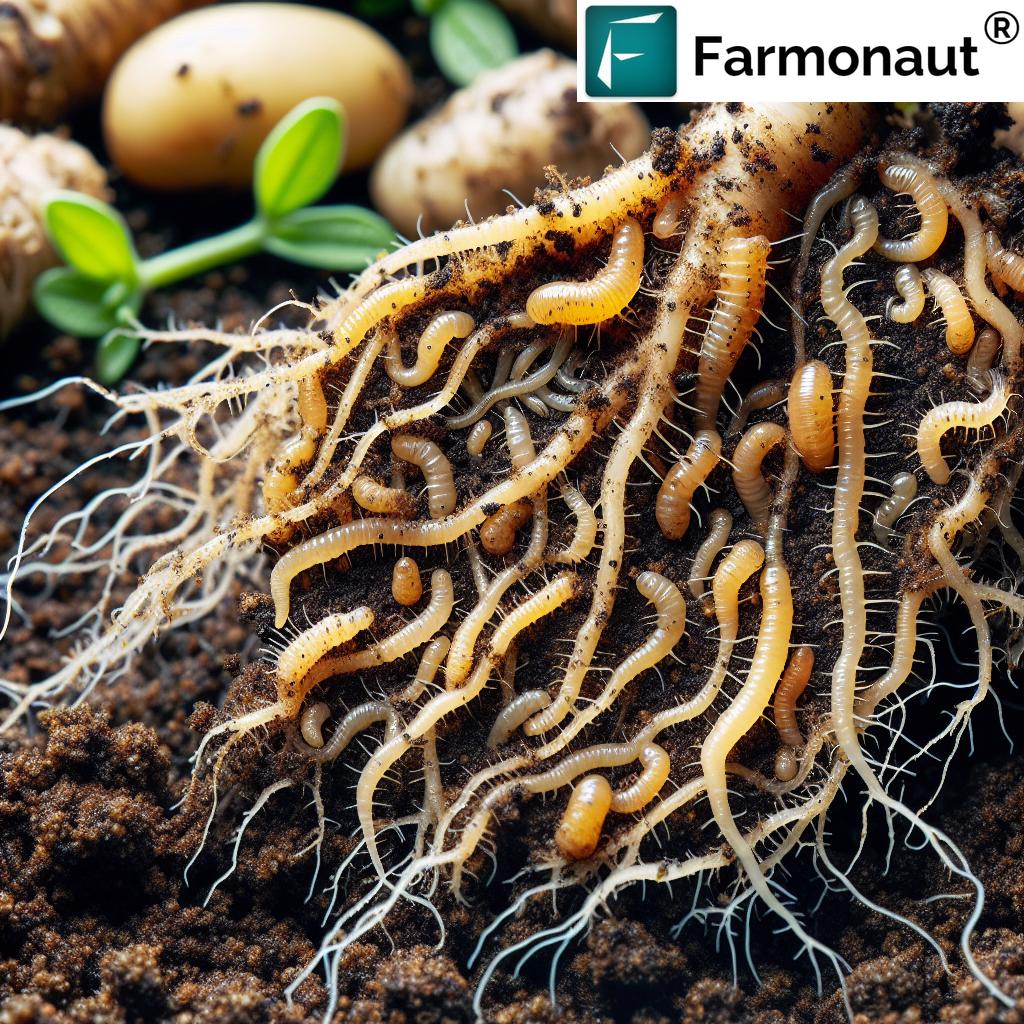Sensors in Agriculture: Revolutionizing Precision Farming in 2025 & Beyond
Introduction: The Rise of Sensors in Agriculture
The landscape of sensors in agriculture has dramatically transformed over the recent years, powering a revolution in global precision farming. With the world’s population expected to surpass 8.5 billion by 2030, boosting food production efficiently and sustainably has never been more critical. As the demand for better yields and sustainable resource management intensifies, farmers globally are turning to advanced sensor technology as an indispensable tool for modern farming.
By 2025, the use of sensors in agriculture—especially IoT agriculture sensors—will become a cornerstone of precision farming, transforming fields into intelligent enterprises.
This blog explores how sensors are revolutionizing the sector, from soil to satellites, driving efficiency, sustainability, and profitability for farms of all sizes. We’ll dive into the latest technologies, sensor types, and how industry leaders like Farmonaut are making powerful, affordable solutions accessible to everyone.
“Over 80% of precision farming operations now use soil moisture sensors to optimize irrigation and boost crop yields.”
What is Precision Farming & Why Is It Essential in 2025?
Precision farming, also known as precision agriculture or smart farming, refers to the integration of advanced digital technologies—like sensors, IoT devices, drones, satellite data, and artificial intelligence—into traditional farming practices. Instead of applying uniform treatments across entire fields, precision farming uses data-driven insights to target specific areas, optimizing the use of resources such as water, fertilizer, and pesticides.
- Efficiency: Maximize yields with fewer inputs.
- Sustainability: Minimize environmental impact by applying resources only where and when needed.
- Profitability: Reduce labor and costs, boost overall productivity.
- Risk Mitigation: Early detection of pests, diseases, and weather events protects crops and investments.
In 2025, precision farming is vital—not just for feeding a growing population, but for conserving resources and fostering global food security in the face of climate instability.
How Sensors Are Revolutionizing Agriculture
The use of sensors in agriculture has redefined how crop health and field conditions are measured and managed. These vital tools monitor a plethora of critical environmental parameters across different scales—from the root zone of crops to entire regions observed by satellites.
Key Benefits and Functions of Agricultural Sensors:
- Soil Health Management: Soil sensors track moisture, nutrient content, pH, and temperature to help optimize irrigation and fertilizer application.
- Real-Time Monitoring: Sensors provide continuous, accurate data for informed decision-making and reducing guesswork.
- Disease & Pest Detection: Early alerts on pest infestations or emerging diseases enable targeted interventions, reducing reliance on widespread chemical use.
- Water Conservation: Technologies like soil moisture sensors and IoT-enabled irrigation systems prevent both overwatering and underwatering—conserving precious water resources.
- Yield Optimization: Accurate mapping of field variability helps maximize outputs on every hectare.
- Cost Savings: Automated systems lower labor requirements and cut operational costs.
The agriculture sensors market is rapidly expanding as farmers adopt innovative solutions to meet the demands of a changing world.
Types of Sensors in Modern Agriculture
Let’s explore the main sensor categories powering precision farming in 2025 and beyond. Each type is specialized for different yet complementary functions in field management:
1. Soil Moisture Sensors
- Function: Measure water content in the soil.
- Benefit: Enables targeted irrigation, minimizing water waste. Helps avoid root diseases from overwatering.
- Application: Irrigation scheduling, drought risk mitigation, optimizing crop water uptake.
2. Nutrient Sensors
- Function: Monitor soil or plant nutrient availability (e.g., nitrogen, phosphorus, potassium).
- Benefit: Fine-tune fertilizer rates, improving yields while reducing chemical input by up to 30%.
- Application: Fertility mapping, variable rate nutrient application.
3. Weather & Environmental Sensors
- Function: Record temperature, humidity, wind, rainfall, and solar radiation.
- Benefit: Predict pest/disease outbreaks, aid in planning and risk mitigation.
- Application: Decision support for irrigation, spraying, and harvest timing.
4. Pest and Disease Detection Sensors
- Function: Identify presence of pests, fungal spores, or plant biomarkers signaling disease.
- Benefit: Early intervention reduces crop loss and limit pesticide usage.
- Application: Targeted pest management, integrated pest management (IPM) plans.
5. Crop Monitoring Cameras (Multispectral/Hyperspectral)
- Function: Capture plant reflectance in different wavelengths; estimate chlorophyll, vigor, and stress.
- Benefit: Identifies variability and emerging problems before visible symptoms. Supports zone-specific management.
- Application: Crop health mapping, drought stress detection, nutrient management.
6. Satellite & Drone-Based Remote Sensing
- Function: Deliver large-scale spatial analysis through high-resolution remote images.
- Benefit: Whole-field or regional coverage, frequent and scalable monitoring.
- Application: Large farm management, forecasting, and benchmarking against regional trends.
Comparative Table: Types of Agriculture Sensors, Benefits & Applications
| Sensor Type | Primary Function | Estimated Benefit | Example Application | Technology Used |
|---|---|---|---|---|
| Soil Moisture Sensors | Measure soil water content | Up to 30% water savings, 20% yield increase | Irrigation scheduling | IoT, field sensors, remote sensing |
| Nutrient Sensors | Measure nutrient levels in soil/plant | Reduce fertilizer use by 30%, boost yield stability | Variable-rate fertilization | IoT, spectrometers, remote sensing |
| Weather Sensors | Track temperature, humidity, wind, rainfall | Up to 12% reduced weather-related losses | Frost warnings, disease prediction | IoT, weather stations, AI analytics |
| Pest & Disease Sensors | Detect pests & early signs of disease | Early intervention, 20% reduction in crop loss, 40% less pesticide use | Targeted pesticide application | IoT, machine vision, field probes |
| Crop Monitoring Cameras | Assess crop vigor & stress with spectral analysis | Spot stress 2 weeks before visible, up to 15% yield gains | Canopy health assessment, growth tracking | Multispectral/hyperspectral, drones, IoT |
| Satellite/Drones Remote Sensing | Large scale crop and soil monitoring | Reduced scouting labor, up to 50% cost savings for large farms | Farm benchmarking, forecasting | Satellites, drones, AI, IoT platforms |
*All benefits are indicative, based on recent studies and survey data for 2025 adoption scenarios.
IoT Agriculture Sensors: The Power of Connectivity
The emergence of IoT agriculture sensors has amplified the efficiency and usability of sensors in agriculture. These sensors, connected to wireless networks, transmit real-time data to cloud-based platforms, where artificial intelligence (AI) can analyze information and provide actionable insights for farmers.
- IoT sensors allow remote field monitoring via smartphones, tablets, or computers—leading to prompt responses to issues like pest infestations or nutrient deficiencies.
- Automated irrigation systems use sensor feedback for precision water application, lowering labor and optimizing water use.
- Wireless connectivity and cloud-based analytics have driven adoption even amongst smallholder farmers worldwide, thanks to falling cost barriers.
-
Farmonaut’s API gives technology providers and agribusinesses seamless access to satellite and IoT data, integrating these insights directly into farm management applications.
For developers, the Farmonaut API Developer Docs offer full documentation to empower rapid integration and innovation.
From Data to Decisions: Sensors, Analytics & AI for Precision Agriculture
The true advantage of sensors in agriculture is realized when abundant, high-resolution data is transformed into meaningful, actionable advice for farm management. With the support of artificial intelligence (AI), machine learning, and advanced analytics, today’s systems not only collect but also analyze data continuously to enable better decisions.
- AI-driven platforms (like Farmonaut’s Jeevn AI Advisory System) interpret sensor and satellite data to forecast weather, predict disease outbreaks, and recommend optimal irrigation or fertilization schedules—tailored to each farm’s unique situation.
- Algorithms can detect variability within fields, enabling farmers to move beyond “one-size-fits-all” and practice truly site-specific management.
- Automated alerts notify users immediately when critical parameters reach risk thresholds (for example: soil moisture drops, imminent heat/drought stress, or early detection of pest incursions).
- Mature AI reduces labor costs by automating routine monitoring and generating precise, reliable recommendations, 24/7.
Beyond the Field: Satellite, Drone & Remote Sensing Crop Sensors in Agriculture
While ground-based sensors offer invaluable point-specific data, the 2025 revolution in precision agriculture is being driven by satellite and drone-mounted crop sensors. These remote sensing tools provide a macroscopic, multi-layered view:
- Satellite imagery supplies frequent, large-scale insights—tracking vegetation health (e.g., NDVI analysis), mapping soil moisture, and flagging crop stress zones.
- Drones equipped with multispectral and hyperspectral cameras can pinpoint detailed variability, pest hotspots, or irrigation issues down to the plant or row level.
- The integration of satellite and ground sensors creates a “field-to-sky” feedback loop, ensuring early warning and targeted action at every scale.

Track carbon footprint and environmental impact with Farmonaut’s real-time monitoring for sustainable farm operations.

Ensure product authenticity & food safety with Farmonaut’s Blockchain-based Traceability solutions—from seed to shelf.
“Sensor technology can reduce fertilizer use by up to 30% through real-time nutrient monitoring in modern agriculture.”
Sensors Enabling Sustainable & Profitable Farming
Sensors are instrumental in making agriculture more sustainable and environmentally responsible. Here’s how advanced agricultural sensors and IoT systems are supporting global efforts toward greater sustainability:
- Water Conservation: Data-driven irrigation, powered by soil moisture sensors, reduces wastage—vital amid increasingly erratic weather patterns and scarce water resources.
- Fertilizer Efficiency: Nutrient sensors and spatial analytics ensure fertilizers are applied only where and when needed, slashing chemical runoff and pollution risks.
- Targeted Pest Management: Early detection sensors help reduce pesticide use, protecting pollinators and beneficial insects while preventing resistance buildup.
- Carbon Tracking: Farms can continuously monitor and manage their carbon footprints to comply with regulations, unlock “green” financing, and respond proactively to climate demands (learn more about Farmonaut’s carbon tracking tools).
- Traceability and Food Security: With blockchain-based tracing, producers and consumers can verify the authenticity and environmental profile of agricultural goods (explore Farmonaut Traceability).
How Farmonaut Empowers Data-Driven Agriculture
At Farmonaut, we believe the future of agriculture lies in making advanced, satellite-based solutions and IoT technologies affordable and accessible to all. Our platform blends satellite imagery, AI analytics, blockchain traceability, and automated advisory systems to empower farmers, businesses, and governments worldwide.
- Real-Time Monitoring: Our web and mobile apps deliver instant insights into vegetation health, soil status, and environmental parameters using latest multispectral satellite imagery.
- AI-Based Advisory (Jeevn AI): Receive tailored crop management, irrigation, and fertilization advice—optimized for your unique fields and current weather.
- Blockchain-Based Traceability: We empower you to guarantee authenticity and food security throughout the supply chain (our traceability platform).
- Fleet & Resource Management: Track equipment & optimize logistics for large-scale or custom operations.
- Environmental Impact Tools: Continuously monitor your carbon emissions with Farmonaut’s Carbon Footprinting.
- Affordable, Scalable, Accessible: Our platform—available via Android, iOS, web app & API—is subscription-based for flexible fit across small farms, agri-businesses, and governments.
-


Emerging Trends and 2025+ Outlook: What’s Next in Sensors and Precision Farming?
As technology advancements accelerate, here are a few emerging trends that will further shape sensors in agriculture in the years ahead:
- AI-Driven Automation: Autonomous planting, fertilizing, and harvesting by smart machines—guided by a network of sensors and satellite data—will lower labor needs and drive precision.
- Predictive Analytics: Aggregation of sensor data from across regions will support early warning systems for weather, pest, or disease outbreaks—enhancing food security at national and global scales.
- Accessible Smallholder Tech: Lower costs and government incentives are bringing sensors and digital management apps to even the smallest farms—helping bridge yield gaps and support sustainable development goals.
- Blockchain-Enabled Supply Chains: End-to-end transparency with sensors and digital ledgers will become the norm for premium, certified food products.
- Environmental Compliance Monitoring: Continuous carbon and water footprint tracking—using a blend of satellite, IoT, and field data—will be integral to meeting global and local environmental regulations.
- Integration with Financial & Insurance Services: Reliable, auditable sensor-based data will unlock new models of agricultural lending, reducing risks for both farmers and banks. Explore Farmonaut’s crop loan and insurance solutions.
By 2025 and beyond, the integration of sensors, IoT connectivity, remote sensing, and AI/analytics platforms will be the undeniable backbone of intelligent, climate-resilient, and sustainable agriculture.
FAQs on Sensors in Precision Agriculture
- What are the main benefits of using sensors in agriculture in 2025?
Sensors deliver real-time, high-precision data on soil, crop health, weather, and more. This enables efficient use of inputs (water, fertilizers), early interventions for pests and diseases, higher yields, and reduced environmental impact. - Which sensors are most common in precision farming?
Soil moisture sensors, nutrient sensors, environmental/weather sensors, pest/disease detection sensors, and multispectral cameras (mounted on drones or satellites) are widely used. - How do IoT agriculture sensors differ from traditional sensors?
IoT sensors are connected wirelessly, enabling remote monitoring and real-time data transmission to cloud analytics platforms, allowing instant decision-making from anywhere. - Can smallholder farmers benefit from sensors?
Absolutely. Costs have dropped significantly, and many solutions are scalable—accessible via smartphones and affordable subscriptions. Farmonaut’s platform is designed for both small and large operations. - What role does satellite technology play in crop monitoring?
Satellites provide wide-area, high-frequency monitoring of vegetation health, soil conditions, and environmental impacts—complementing ground sensors for a whole-farm management approach. - Is it easy to integrate these technologies?
With platforms like Farmonaut’s API and user-friendly web/mobile interfaces, integrating advanced sensors, satellite data, and AI insights into everyday farming has never been easier. - How do sensors contribute to sustainable agriculture?
By precisely managing water and fertilizer application, detecting issues early, and enabling traceability, sensors directly support more sustainable food production practices.
Conclusion: Sensor-Driven Precision Agriculture Is the Future
In summary, sensors in agriculture—from ground-based soil moisture devices to advanced IoT agriculture sensors and satellite remote systems—are the foundation of modern, intelligent farming. As integration with cloud analytics, artificial intelligence, and affordable subscription platforms accelerates, every grower can optimize production, conserve vital resources, and build more sustainable, resilient food systems.
By 2025 and beyond, embracing the sensor revolution is no longer an option—it’s essential to thriving in the new era of precision farming, feeding a growing global population, and safeguarding our planet.
Ready to revolutionize your farming? Start your sensor-enabled journey with Farmonaut today and cultivate a smarter future!


